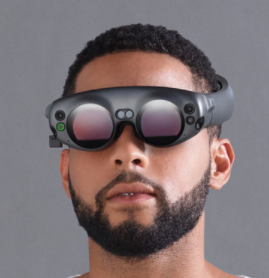Latest news about Bitcoin and all cryptocurrencies. Your daily crypto news habit.
 The ship wherein Theseus and the youth of Athens returned from Crete had thirty oars, and was preserved by the Athenians down even to the time of Demetrius Phalereus, for they took away the old planks as they decayed, putting in new and stronger timber in their places, in so much that this ship became a standing example among the philosophers, for the logical question of things that grow; one side holding that the ship remained the same, and the other contending that it was not the same — Theseus Paradox, Plutarch In Theseus
The ship wherein Theseus and the youth of Athens returned from Crete had thirty oars, and was preserved by the Athenians down even to the time of Demetrius Phalereus, for they took away the old planks as they decayed, putting in new and stronger timber in their places, in so much that this ship became a standing example among the philosophers, for the logical question of things that grow; one side holding that the ship remained the same, and the other contending that it was not the same — Theseus Paradox, Plutarch In Theseus
Must we recreate everything that we see around us? Must we create what we projected as fiction? In doing so, which is is the true reality. This dilemma is similar to Theseus’ Paradox above. Since time immemorial, we have attempted to recreate the universe. The technological advances from Virtual Reality (VR) and Augmented Reality (AR) to Extended and Mixed Reality beg the question: where are we headed next? Implanting a chip in our brain seems to be the logical next step. Do we cease to be human then? This article attempts to answer that dilemma.
Future Forward
To my mind, as we move along a path of exponential disruption from Virtual Reality to Augmented Reality (AR) and Mixed Reality, the next step is to completely get rid of external interfaces i.e. we may have a chip in the brain that talks to other cybernetic organisms or machines through neural links. If Cybernetic Organisms (Cyborgs), the future, Extended Reality (ER) is a milestone on that journey. There is already good evidence pointing towards that future. Besides medical prosthesis, three real life examples can help us imagine what cyborgs would look like:
1.Professor Kevin Warwick is one of the first and foremost experts in the field of cybernetics. He began by implanting a chip in his own body. He is also the author of a book “I, Cyborg” As per his website Kevin was a pioneer in neuro-surgical implantation of a device (Utah Array/BrainGate) into the median nerves of his left arm in order to link his nervous system directly to a computer to assess the latest technology for use with the disabled.
2.Employees at a company in Wisconsin-Three Square Market can implant RFID chips in their hands in seconds.
3.All organisms are Algorithms says Yuval Noah Harari, author of the bestselling book “Sapiens: A Brief History of Humankind”. According to Yuval, if we are able to decode the biological algorithms and translate that to AI using advanced computing, we should be able to create a completely different species of humans- the next evolutionary jump from Homo Sapiens. Speaking at the World Economic Forum, Professor Yuval Noah Harari imagined a future where Homo Sapiens are replaced by completely different entities created using advances in biotechnology and information technology particularly Artificial Intelligence.
What Realities May Come
Virtual Reality
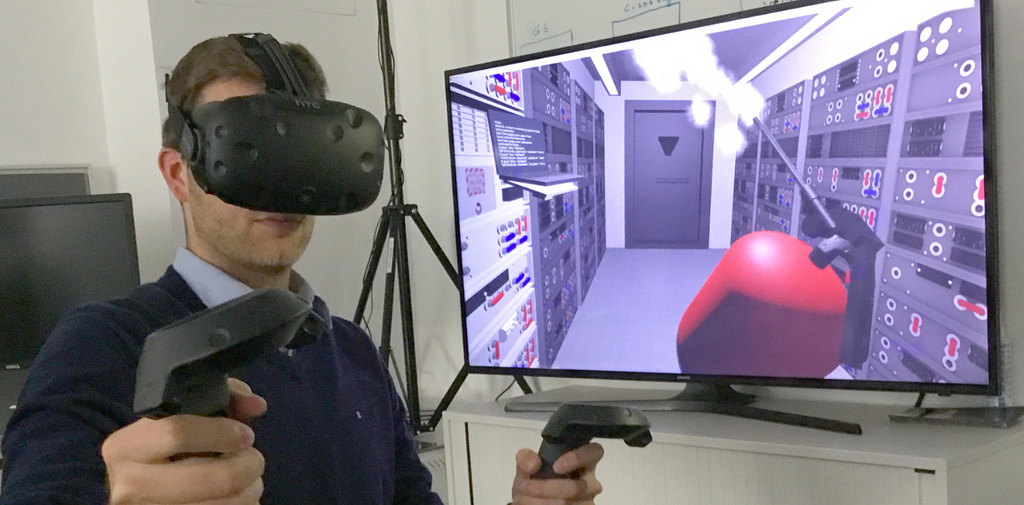 Source: Virtual Reality by Wikipedia
Source: Virtual Reality by Wikipedia
Virtual Reality is not a new technology. The concept can be traced back to the 20th century. However, building a commercial prototype has become a reality recently. Today , it is mostly used for gaming. However, its applications have grown to include house showings in China and simulating real life conditions. There challenges before VR are an obtrusive headset necessary for a truly immersive experience. Also, VR can induce dizziness if used over an extended period of time. Personally, anything beyond 30 minutes required re-orientation.
Augmented Reality
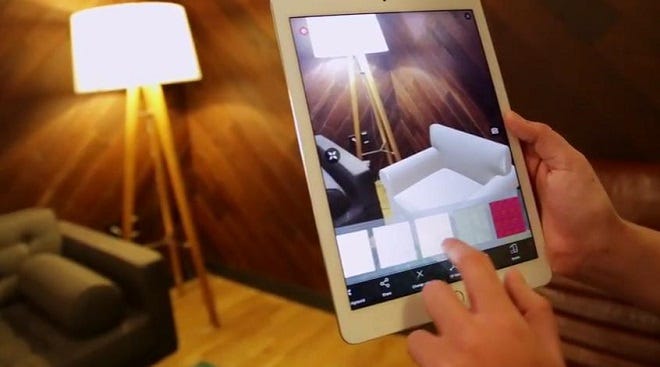 Source: Augmented Reality by Wikipedia
Source: Augmented Reality by Wikipedia
The next logical evolution, which in some senses was almost simultaneous (remember Google Glass), was Augmented Reality (AR). With smartphone cameras and applications accommodating a layer of digital information over the real world, AR became easier to use. Both smartphones and smart glasses are used in AR today. Many publications such as the Harvard Business Review and The New York Times use AR today.
Mixed Reality
Although no longer secretive, Rony Abovitz’s creation could be the next evolution. As per Wikipedia, his startup MagicLeap is creating a ‘Mixed Reality’ which superimposes 3D computer-generated imagery over real world objects, by projecting a digital light field into the user’s eye, involving technologies potentially suited to applications in augmented reality and computer vision. It is attempting to construct a light-field chip using silicon photonics
Extended Reality
Extended Reality is in it’s infancy considering it’s predecessors are still finding newer applications and growth areas. It might take us decades to reach a truly functioning and commercialized XR experience.
As per Wikipedia, Extended reality (XR) is a term referring to all real-and-virtual combined environments and human-machine interactions generated by computer technology and wearables. It includes representative forms such as augmented reality (AR), augmented virtuality (AV) and virtual reality (VR). [1] and the areas interpolated among them. The levels of virtuality range from partially sensory inputs to immersive virtuality, also called VR.
XR is a superset which includes the entire spectrum from “the complete real” to “the complete virtual” in the concept of reality–virtuality continuum introduced by Paul Milgram.
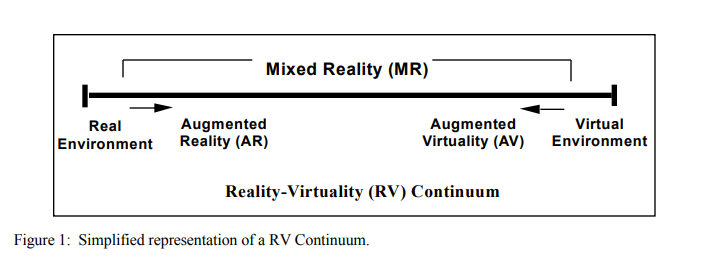 Source: Augmented Reality: A class of displays on the reality-virtuality continuum Paul Milgram, Haruo Takemura , Akira Utsumi†, Fumio Kishino, 1994
Source: Augmented Reality: A class of displays on the reality-virtuality continuum Paul Milgram, Haruo Takemura , Akira Utsumi†, Fumio Kishino, 1994
Still, its connotation lies in the extension of human experiences especially relating to the senses of existence (represented by VR) and the acquisition of cognition (represented by AR). With the continuous development in human–computer interactions, this connotation is still evolving.
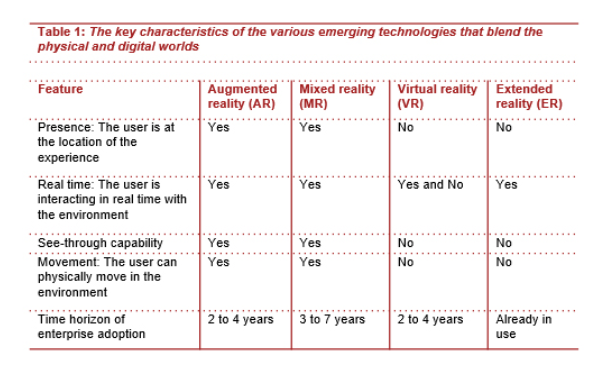 Source: http://usblogs.pwc.com/emerging-technology/the-road-ahead-for-augmented-reality/
Source: http://usblogs.pwc.com/emerging-technology/the-road-ahead-for-augmented-reality/
A truly Extended Reality (XR) experience would need 5G, truly high definition displays, motion sensors, advanced microchips and longer lasting batteries. All of these technologies will possibly involve a consortium effort to reach fruition faster.
In other words, virtual objects must become real and real objects more virtual.
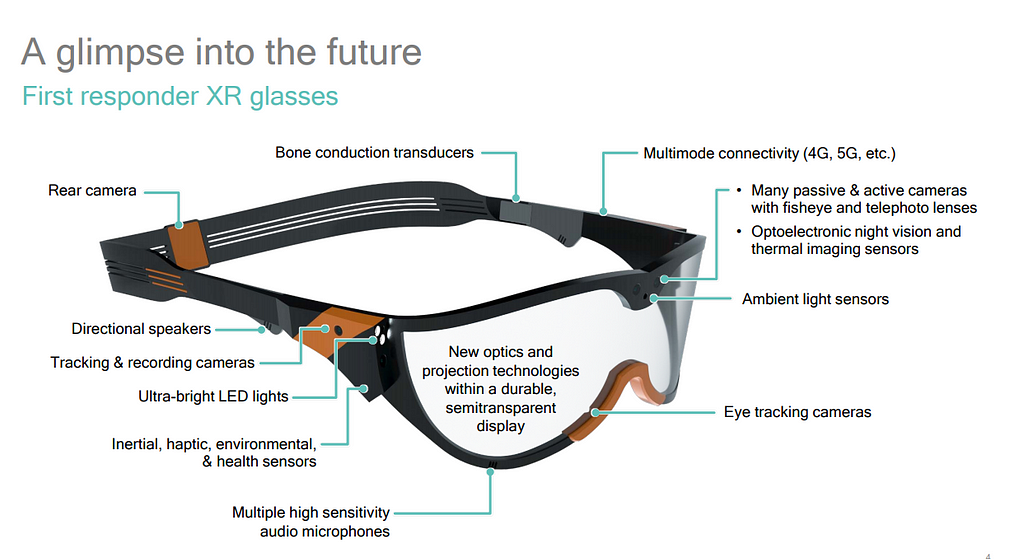 Source: Qualcomm AWE 2017 Presentation on Extended Reality
Source: Qualcomm AWE 2017 Presentation on Extended Reality
A Spiritual Perspective: Trikaal Gyana
In ancient Jain philosophy, there is a concept called Trikaal Gyana (meaning knowledge of the past, present and future state of things). What humanity is trying to create is a body of knowledge that strings together the dots of the three time periods of the world as we know it. To my mind, eating to digest information available throughout our universe.
Imagine the potential risk if things go wrong. Too much data concentrated in few hands could alter the very fabric of our future. Information Asymmetry just acquired a very dangerous meaning. From time immemorial, many humans, especially when they realize they have little time left, have wandered around the world searching for the magical “Elixir”, “Fountain of Youth” , “Holy Grail” etc. Therefore, the search for a mystical answer to the purpose of life is not new. It becomes dangerous when the purpose becomes world domination.
Therefore, from a spiritual perspective, science has to be guided by a higher power. Otherwise, it becomes a weapon of mass destruction. One could be easily reminded of Oppenheimers’ words when he saw the nuclear bomb exploding. Borrowing a verse from the ancient Bhagvad Gita, he said:
“Now I am become Death, the destroyer of worlds”.
Homo Cyborgus
To answer the question prefaced in this article, humans will exist but as a completely different species. Call it evolution or transformation but having a chip in the brain seems to be our next logical destination.
Of course, it could still turn out to be fantasy but a simple extrapolation of the future seems to indicate us moving towards becoming “Homo Cyborgus”. Yes, the term sounds alien to me as well. Until then, I am nothing but a philosopher that lies between the spectrum defined by Professor Kevin Warwick as:
“I feel that we are all philosophers, and that those who describe themselves as a ‘philosopher’ simply do not have a day job to go to.”
A Fresh Pair Of Eyes was originally published in Hacker Noon on Medium, where people are continuing the conversation by highlighting and responding to this story.
Disclaimer
The views and opinions expressed in this article are solely those of the authors and do not reflect the views of Bitcoin Insider. Every investment and trading move involves risk - this is especially true for cryptocurrencies given their volatility. We strongly advise our readers to conduct their own research when making a decision.
